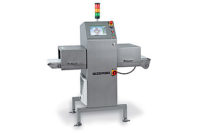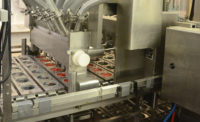Some say distribution is treated like the orphan of a dairy operation. And when it does get attention it usually has something to do with logistical strategies, or hand-held computers. Trucks are often taken for granted.
On the other hand, a refrigerated truck body is where some of a dairy's most important work is done. The truck is also a rolling billboard for a dairy--probably its most publicly visible aspect after the products in the store case.
And while the basic needs of the dairy company remain the same--a functional, well refrigerated delivery vehicle--processors are seeking safety features for drivers, greater protection for products and in some cases, more longevity and durability. And they're getting it.
Manufacturers are offering more sophisticated cold plate technology, safer and more ergonomic ramping options, and more durable construction.
Greg LaFrance, director of sales and marketing at Johnson Truck Bodies, Rice Lake, Wis., sells refrigerated truck bodies to a number of industries, including a cross section of segments in the food industry. Dairies have their own needs, he says.
"The demand for quality is there, " LaFrance Says. "A lot of food delivery goes toward the less expensive. In dairy they want longevity and durability."
"A lot more lift gates are being sold," LaFrance says. "We're installing back up cameras for safety, side steps, and more safety features on a lift gate, and bumpers that are easier to walk up. Everybody wants to lower the liability, so we're trying to keep drivers on the ground as much as possible."
Hercules Manufacturing Inc., Henderson, Ky., has a long history in commercial refrigeration, but is a more recent entrant into the truck body market than Johnson or Kidron Inc., Kidron, Ohio.
Jeffery Caddick, purchasing agent at Hercules, says that fleet operators are driven specifically by a need to keep workers compensation insurance costs in check. "With the food industry that usually means two things--walk ramps and lift gates," Caddick says. "We're offering a third option that's kind unique and that's gravity steps." Installed at the side door, gravity steps form a 3-step staircase when lowered. This allows a driver to walk in and out of the truck while carrying product.
Coldplate refrigeration, although still remarkably simple, has gone undergone some refinement in recent years, Caddick says.
"If you go back 10 or 15 years, most people had plates hanging on the walls. But now by and large they have gone to a plate blower technology," Caddick says.
Having smaller plates in the front of the box means less damage from plate-product contact, less condensation and weeping from plates and a more uniform refrigeration throughout the box thanks to an automated thermostat.
Other improvements found in today's trucks include recessed lighting, better floor and wall designs which make it easier to store and move product, and improved load control through the use of specialized tracks, arms and shelves.
Another important consideration is a solution for maximizing exterior graphics, which are so important to dairy companies.
A few years ago, Kidron acquired the Hackney line, which is very popular with dairies in part because the horizontal configuration of its body panels means there are fewer seams to distort truck graphics. The Hackney is also renowned for its rugged, simple design. Caddick acknowledges that while vertically configured panels are great for structural integrity, they make it tough to offer a smooth palate for body graphics. Hercules has a solution however.
"Dairies use pretty extensive decal graphics, and they don't like putting it on over a lot of rivets," he says. "We can apply the decal before it's riveted. When they get it from us they license it and put it in service--it's a complete unit."
While new technologies are leading to better truck bodies, a shift in consumer preferences is prompting Johnson to focus on what was previously a shrinking niche model--the home delivery truck.
LaFrance recently attended a meeting of an association that represents dairies that play in the home delivery market. Home delivery was once a leading channel for milk sales, but eroded in the past 40 years until it represented just a couple percentage points of the market. But with some new marketing approaches and delivery techniques, home delivery appears to be growing. There are some numbers that indicate this, and LaFrance heard some good anecdotes at the conference to support it.
"They all say their business is growing," he says.
So Johnson has been busy updating its home delivery model. The new trucks will have many of the latest safety and efficiency features found in the route trucks (see showcase item).


